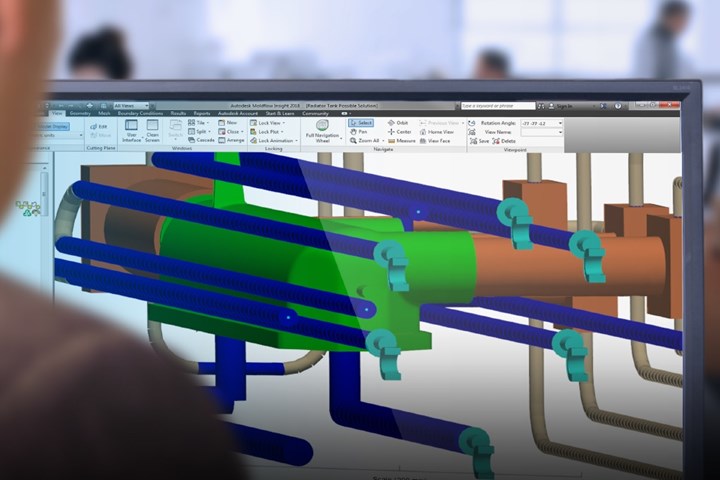Share

Presenters Jeff Higgins Moldflow Subject Matter Expert and Brian Pelley Moldflow Technical Specialist from Autodesk tagged-teamed this webinar to educate attendees on true optimization.
“Ask yourself when the last time was you said that you need to optimize something? Well, it’s time to define exploration vs optimization. Optimization is a systematic method to making something better,” Higgins says, “and Moldflow injection molding simulation software can help.”
Manufacturing starts with design, and there are three key variables during upfront design that can have a huge impact or give you the biggest trouble down the line if not considered upfront: (1) geometry, (2) material and (3) potential gate locations.
It’s about making better decisions sooner about:
- Geometry analysis
- Sink, distortion, as molded shape
- Best bate location
- Complete filling
- Guided part quality prediction
Best known Moldflow secret is its tool to explore the sensitivity of material properties and how it influences the processing window (quality estimate, pressure, temp, shear rate, cooling time, compare materials).
Make optimization part of your standard workflow. Explore alternatives and what they mean to part design. Optimization does not stop at the part. You have to take a look at the full system—mold and machine. Mold and process development are just as important: gate type and size, for example.
Here are some of the questions asked and answered during the Q&A portion of his webinar:
- Why wouldn’t I just rely on experts, consultants, suppliers, etc. for DFM & simulation?
- Would our designers need to learn Moldflow then too?
- Do you need to do DFM and upfront simulation on every design?
- is there a cooling optimization module for your software to analyze the cooling efficiency?
- How Moldflow tackles wall thickness as a DoE parameter? Does it remesh the model somehow in background?
- How do you make the best material selection choice given all the choices?
- Do you foresee in the future a real possibility that Moldflow software can predict the cosmetic appearance in a decorative plastic component? This is a recurrent topic for discussion.
- Is it currently possible to extract the results from Moldflow and use it in a FEA structural analysis, if yes what FEA software is recommended to do this?
- Do you use warpage compensation?
- How can I optimize part design is cases like tiger stripes, racetrack effect etc.? How can I make simulation useful if some things are very hard to simulate?
- For somebody who does not have any experience working with Mold Flow, what is the best way to learn the software? is there any training from the beginner level to advanced?
- What is your favorite (or most impactful) customer story and why?
- Can you review some key aspects of the presentation. What is your final takeaway?
- Do you have experience/solutions for MIM or CIM? (metal/ceramic) Gating prediction Flow lines or black lines
- To what extent would you trust the deflection values in warpage result tab?
To watch this webinar for free, click here. For our full list of archived MMT webinars, click here.
Related Content
-
What is Scientific Maintenance? Part 2
Part two of this three-part series explains specific data that toolrooms must collect, analyze and use to truly advance to a scientific maintenance culture where you can measure real data and drive decisions.
-
The In's and Out's of Ballbar Calibration
This machine tool diagnostic device allows the detection of errors noticeable only while machine tools are in motion.
-
Tolerancing in Mold Design, Part 2: Using GD&T to Address Conventional Tolerancing Issues
Mold designers can achieve a single interpretation of workpiece functionality when following the American Society of Mechanical Engineers Geometric Dimensioning and Tolerancing standard.









.png;maxWidth=300;quality=90)







